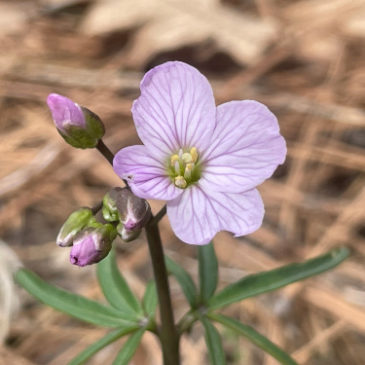Spring in Herland Forest

In the Herland Forest, the cold, wet days of winter are giving way to spring. The annual pageant is getting underway as the first wave of wildflowers brings beauty that uplifts the heart after a long winter.
It’s exciting to see the eager shoots of daffodils and tulips poking up through the mulched graves. It won’t be long before their blossoms spread a riot of color throughout the woods.
Herland Forest lies at the intersection of the wet forests of the western cascades and the dry highlands of the eastern cascades, so we get to enjoy a floral succession that features the wildflowers of the east followed by the blossoms of the western forest. I’m reminded of the way that some businesses buy fresh flowers each week to liven up the office, only here it’s nature that does the decorating. It’s like the forest is offering its beauty as a tribute to life.

Spring is a time of buds and babies. Now that the snow has melted, a new generation of lambs, kids, and chicks arrives to kick off another year. This is Sprinkle2, our first born doe kid of 2023. Here she is enjoying some quiet time in the manger. Soon, she’ll have to share space with the kids who are due to birth over the next few weeks.
Our hay barn is currently home to a family of forest cats. The mother has taken to tucking her kits in among the hay bales while she goes and hunts. Feeding hungry kittens takes lot of milk so she spends her day patrolling for mice and squirrels.

It’s been a hungry winter for the squirrels, so now that things are turning green, the squirrels are eager to fatten up. So are the cats.
The cats are attracted to the barn by the spring flush of squirrels. The squirrels in turn are venturing out of their underground burrows looking for food.
The animals who live here are working parts of our sustainability systems, and they pretty much go about their lives. To the extent possible, we let the animal members of our community just live their lives their own way, and it’s fun to see how they manage their own affairs.
We do tweak the system somewhat, but it’s still their system. For example, in the fall we keep the does and bucks separate until the start of November. Left to their own devices, they’d mate in early fall, but that would result in kids being born in a snowstorm in January. They’re not happy about having to wait a couple of months—and they let us know about their dissatisfaction in no uncertain terms—but it’s worth putting up with some complaining to ensure that babies aren’t born in the snow.
